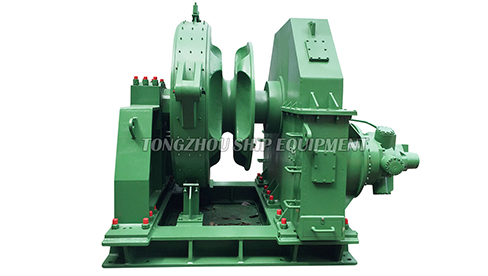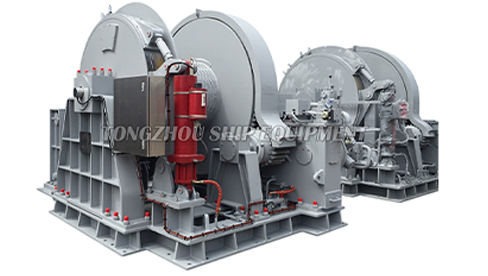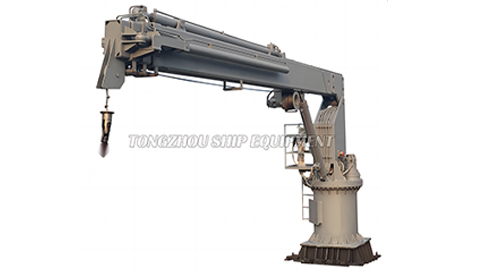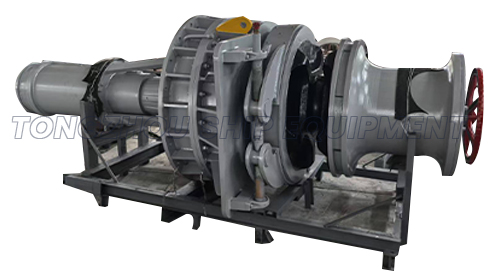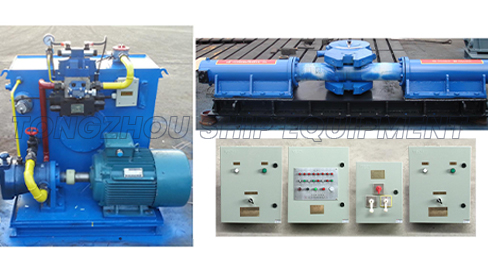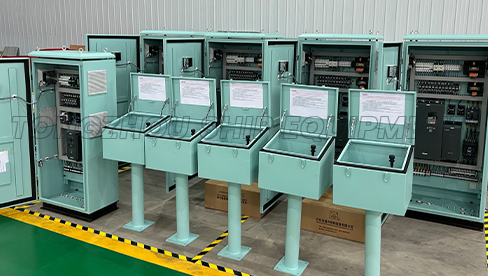What Factors Influence the Lifespan of a Marine Hydraulic Anchor Windlass?
 2025.07.18
2025.07.18
 Industry News
Industry News
The reliable operation of a marine hydraulic anchor windlass is critical for vessel safety and operational efficiency. Unlike simple mechanical components, its lifespan is influenced by a complex interplay of factors. Understanding and managing these elements is essential for maximizing service life and avoiding costly downtime or failures.
1. Hydraulic Fluid Quality and Maintenance:
-
Fluid Condition: Contamination (water, air, particulate matter) is the primary enemy. Particles cause abrasive wear in pumps, valves, and motors; water promotes corrosion and degrades fluid properties; air leads to cavitation and spongy operation. Strict adherence to OEM-recommended fluid type (viscosity, additives) is paramount.
-
Filtration: High-quality, correctly sized filters (suction, pressure, return) maintained rigorously are non-negotiable. Regular fluid analysis to monitor particle counts, water content, viscosity, and additive depletion is a powerful predictive tool.
-
Fluid Change Intervals: Following manufacturer-specified change intervals, or changing based on fluid analysis results, prevents the cumulative damaging effects of degraded fluid and contaminants.
2. System Design, Installation, and Component Quality:
-
Component Selection & Matching: The hydraulic pump's flow and pressure capacity must be correctly matched to the motor's requirements. Undersized components will be overloaded; oversized systems can lead to inefficiency and heat buildup. Using high-quality, marine-grade components designed for the expected duty cycle is fundamental.
-
Installation Integrity: Proper mounting (ensuring alignment, minimizing stress on pipes/hoses), correct piping/hosing (adequate sizing, secure routing avoiding chafing), and meticulous bleeding of air from the system are crucial. Poor installation can lead to leaks, vibration, premature wear, and failure.
-
Heat Management: Hydraulic systems generate heat. Adequate reservoir sizing, proper heat exchangers (if required), and ensuring fluid flow rates are sufficient to carry heat away are vital. Excessive heat accelerates fluid degradation and seal failure.
3. Operational Practices:
-
Duty Cycle: Consistently operating the windlass beyond its rated duty cycle (e.g., prolonged heavy pulling, excessive cycling) subjects components to thermal and mechanical stress they aren't designed for, drastically shortening lifespan.
-
Load Management: Avoiding shock loads ("snatching") and preventing overloads (e.g., trying to break out an anchor buried under excessive seabed material without clearing first) protects gears, shafts, bearings, and hydraulic components from catastrophic stress.
-
Proper Technique: Using the windlass correctly – paying out chain under control, retrieving at steady speeds, using the vessel's propulsion to assist in breaking the anchor free when necessary – reduces strain on the system.
4. Contamination Control:
-
Sealing Integrity: Maintaining all seals (shaft seals, cylinder rod seals, pipe/hose fittings, reservoir seals) prevents the ingress of seawater, salt spray, and external debris, as well as containing fluid leaks.
-
Maintenance Procedures: Performing any maintenance (fluid top-ups, filter changes, component replacement) with scrupulous cleanliness is essential. Introducing contaminants during servicing is a common cause of subsequent failure.
-
Environmental Exposure: Protection from direct seawater immersion, heavy spray, and corrosive atmospheres through proper cowlings or location helps mitigate corrosion.
5. Corrosion Protection:
-
Material Selection: Components made from corrosion-resistant materials (stainless steels, properly coated/painted ferrous metals, marine-grade alloys) are essential in the saltwater environment.
-
Cathodic Protection: Ensuring the windlass structure is correctly integrated into the vessel's cathodic protection (zinc anode) system prevents galvanic corrosion.
-
Regular Inspection & Maintenance: Promptly addressing paint damage, cleaning off salt deposits, and lubricating exposed mechanisms (e.g., gypsy pawls, clutch linkages) according to the manual combats corrosion.
6. Preventative and Predictive Maintenance:
-
Adherence to Schedule: Strictly following the manufacturer's preventative maintenance schedule (fluid/filter changes, seal inspections, torque checks, lubrication) is the baseline for longevity.
-
Regular Inspections: Visual inspections for leaks, corrosion, loose fittings, damaged hoses, and unusual noises can catch problems early before they escalate.
-
Monitoring Performance: Paying attention to changes in operation – slower speed, increased noise, higher operating temperature, fluid discoloration – provides early warning signs of developing issues.
The lifespan of a marine hydraulic anchor windlass is not predetermined but is directly governed by the operational environment and the diligence applied to its care. There is no single "silver bullet." Achieving maximum service life requires a holistic approach: selecting quality components installed correctly, maintaining pristine hydraulic fluid through rigorous filtration and analysis, operating within design limits using proper techniques, vigilantly excluding contaminants, aggressively combating corrosion, and adhering to a disciplined preventative maintenance regime. Investing in these areas translates directly into enhanced reliability, safety, and reduced total cost of ownership over the windlass's operational life.



 English
English  عربى
عربى  中文简体
中文简体 
